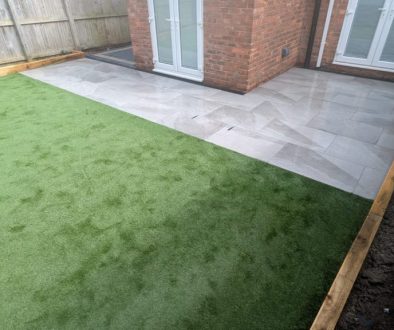Garden Pathways: Practical Layouts to Guide Every Step
A well-designed garden pathway is more than just a route through your outdoor space—it shapes how you experience your garden. From creating flow and structure to improving safety and visual appeal, pathways play a vital role in transforming outdoor areas. If you’re planning to enhance your garden with a new path, understanding the practical layout options available is the first step towards a more usable and attractive space.
What Makes a Pathway Layout Practical?
Before diving into specific styles, it’s important to define what makes a garden pathway truly functional. A practical layout balances form and purpose, guiding movement smoothly while blending into the surrounding landscape.
- Accessibility: The path should allow easy movement, whether you’re walking solo, pushing a wheelbarrow, or guiding children and pets.
- Flow: Good layouts direct foot traffic logically between entrances, patios, sheds, and garden zones.
- Safety: Surfaces must offer grip and stability in all weather conditions.
- Maintenance: The layout should not interfere with mowing, watering, or other garden tasks.
Keeping these principles in mind ensures that your pathway will serve your space well for years to come.
Straight Paths for Structured Gardens
Straight garden paths offer clarity and direction. Their linear layout suits formal gardens and structured outdoor spaces where symmetry and order are key themes.
- Visual Focus: Straight lines naturally lead the eye toward a feature—be it a front door, seating area, or flowerbed.
- Ease of Installation: Simpler to lay than curved paths, making them cost-effective and efficient.
- Minimal Wastage: The straightforward geometry often results in less material cut-off and faster project completion.
These paths work particularly well in front gardens, where they provide a crisp, professional appearance that enhances kerb appeal.
Curved Paths for a Natural Feel
If your garden embraces a more organic or cottage style, curved pathways may be the ideal choice. Their gentle bends mimic natural trails, encouraging exploration and adding softness to the layout.
- Natural Integration: Curved paths can meander around trees, beds, or water features, enhancing the flow of the landscape.
- Relaxed Ambience: The informal look of a winding path helps create a peaceful, leisurely garden experience.
- Creative Design: Offers opportunities to frame views or reveal focal points gradually.
Curved paths often work best in larger gardens, where there’s room to accommodate their more expansive footprint.
Stepping Stones for Informal Routes
For those looking for a lighter, less invasive option, stepping stones provide a charming and flexible solution. This layout suits informal gardens and areas where you want a path that blends effortlessly with the lawn or gravel.
- Minimal Disruption: Leaves much of the surrounding ground exposed, preserving existing greenery.
- Adaptability: Ideal for crossing lawns, connecting patios, or creating a whimsical walk through a flower garden.
- Visual Interest: Offers scope to play with spacing, shape, and material.
Stepping stone paths are easy to update and expand, making them perfect for evolving garden layouts.

Zigzag Paths for Sloped or Challenging Terrain
When dealing with sloped gardens or uneven terrain, zigzag pathways provide a smart and visually striking solution. These layouts allow gradual elevation changes without the need for steps, which can be challenging for accessibility.
- Improved Traction: Slows down movement, reducing the risk of slipping on inclines.
- Soil Retention: Can be integrated with retaining elements to prevent erosion.
- Architectural Flair: Adds a distinctive look that stands out in modern garden design.
Zigzag layouts also break up steep areas into more manageable, usable segments, making awkward plots easier to enjoy and maintain.
Combining Materials for Form and Function
The materials you choose for your pathway can enhance both its usability and its appearance. Mixing materials allows you to tailor the path to suit different zones and purposes.
- Stone and gravel: Combine a durable base with natural aesthetics.
- Brick and paving slabs: Provide structure and longevity with design versatility.
- Timber sleepers or recycled materials: Introduce rustic or eco-friendly elements.
Using contrasting colours or textures helps define path edges and can highlight different parts of the garden, creating a more dynamic outdoor space.
Lighting and Edging: Final Touches that Matter
Once the layout and materials are in place, it’s the finishing details that make a pathway stand out. Proper lighting and edging add polish, safety, and longevity to the design.
- Lighting: Solar lights, recessed LEDs, or lantern-style fixtures improve visibility after dark and extend usability into the evening.
- Edging options: Brick, stone, metal, or timber can define the boundaries and prevent spreading, especially for loose materials like gravel.
- Drainage considerations: Integrated solutions prevent water pooling and keep paths safe and clean in wet weather.
Together, these features not only complete the look but ensure the path performs well in daily use.
Upgrade Your Outdoor Space with Expert Garden Pathway Design
The right garden pathway layout can redefine how you use and enjoy your outdoor space. Whether you prefer the formality of straight lines, the relaxed charm of curves, or the playful spacing of stepping stones, there’s a layout to match every garden and lifestyle. By thinking through the design and seeking professional support, you can ensure the path you choose is as practical as it is beautiful.
Call M&C Paving Northeast today to speak with our team about designing a practical and attractive pathway for your garden.




